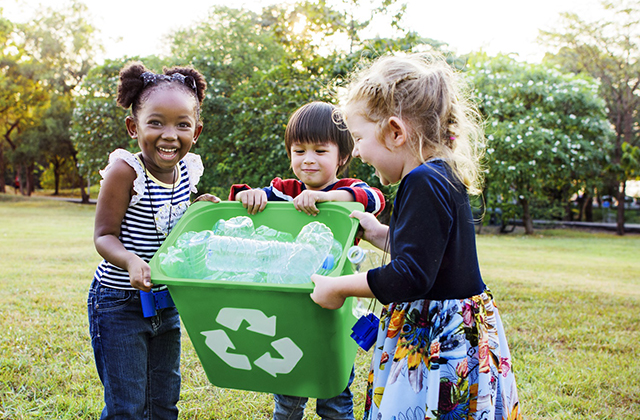When you think of hazardous waste, do you envision drums of oozing liquid covered in skull and cross-bone stickers? That image certainly can fall into the hazardous waste category, but hazardous waste can be created by almost any industry or manufacturing process. There are other types of hazardous waste that you may not realize are a danger to our health or our environment. Pesticides? That one most people know. Gasoline? That’s considered hazardous too. Old computers? Even that! Our green waste disposal services focus on recovering resources from your garden and garden waste.
We’re breaking down the five hazardous waste categories and offering insight on how to best handle and dispose of them.
1. Listed Waste
The EPA has determined specific wastes as hazardous and has published three lists classifying these listed wastes.
F-List
Wastes on this list are created from common manufacturing and industrial processes. Because these wastes are produced in multiple industries, they are known as “non-specific source waste.”
K-List
Wastes, including sludge or wastewater, from a selection of specific industries, such as petroleum refining or pesticide manufacturing, are included on this list. Since we know the industry they are produced in, they are called “source-specific wastes.”
P-list and U-list
Wastes on this lists are commercial chemical products being discarded in their unused form. They become hazardous when discarded.
2. Characterized Waste
There are plenty of waste materials not included in the above listed wastes. These materials can be considered hazardous if they meet one or more of the outlined characteristics of hazardous waste.
Ignitability
Creates fire under certain conditions, spontaneously combustable or has a flash point less than 140F (60C).
Corrosivity
Acids or bases that can corrode metal tanks, drums, or other containers. They have a pH less than or equal to 2 or greater than or equal to 12.5.
Reactivity
These waste materials are unstable under normal conditions. They can cause explosions, toxic fumes, gases, or vapors if heated, compressed, or mixed with water.
Toxicity
Toxic materials can be harmful or lethal if ingested or absorbed. When disposed of in landfills, toxicity can be absorbed into the ground and contaminate ground water
3. Universal Waste
Universal waste materials are a hazardous waste, but this category is comprised of materials that are very common, many which are found around your household. More specifically this category includes:
- Batteries
- Pesticides
- Equipment containing mercury
- Lamps containing mercury
4. Mixed Waste
Mixed waste contains both radioactive and hazardous components. Most commercially generated waste is low-level mixed waste, and contains low-level radioactive waste. It can be generated throughout many industries including the medical, pharmaceutical, nuclear, and other energy industries.
5. E-Waste
A growing hazardous waste category is e-waste, or electrical or electronic waste. This includes old computers, printers, TVs, fridges, even an old coffee maker or toaster. Many of their components are hazardous due to changes during the manufacturing process.
How to Handle Hazardous Waste
If your company is a hazardous waste generator, these are the steps that are required of you:
- Identify each hazardous waste your company generates
- Count the total weight of the hazardous materials you produce in a month. You’ll fall within one of three generator categories: Large Quantity Generator (more than 1,000 kilograms), Small Quantity Generator (100 – 1,000 kilograms) or
- Conditionally Exempt Small Quantity Generator (less than 100 kilograms).
- If you are a Large or Small Quantity Generator, notify your state agency and the EPA of hazardous waste activities.
- Manage your hazardous waste categories in accordance to specific regulations for each category.
- Arrange for transportation from your site to an off-site waste management facility, with proper forms and reports.
- Recycle, treat or dispose of the materials.
The easiest way to ensure environmentally responsible disposal of hazardous waste is to partner with an environmental recovery or waste disposal team. A waste disposal team will be well-versed in the local, state, and federal regulations for the handling and disposal of hazardous waste materials.
